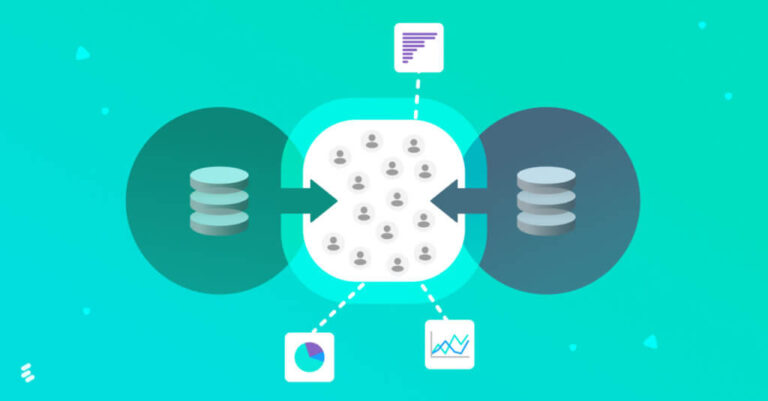Introduction to Data Clean Rooms
In the age of digital transformation, companies are increasingly seeking innovative ways to harness data for their marketing strategies while maintaining strict privacy standards. One effective solution is the data clean room. This secure environment allows businesses to securely analyze and match data from multiple sources.
But what exactly is a data clean room, and why is it becoming a pivotal tool in modern marketing? Understanding its functionality and benefits is crucial for businesses leveraging this technology for more informed decision-making. With data clean rooms, companies can engage in secure data partnerships, gaining richer insights while adhering to stringent data privacy laws.
The Importance of Data Privacy in Marketing
Data privacy has never been more crucial. With the advent of regulations like GDPR and CCPA, businesses must be more vigilant about handling consumer information. For instance, an audience insights tool can significantly enhance marketing efficiency and drive better results without compromising privacy. Data mismanagement can lead to severe repercussions, including hefty fines and loss of customer trust. Ensuring privacy is a legal obligation and an imperative part of brand trust. Digital trends, including those detailed by Forbes, highlight the pressing need to prioritize data security.
Moreover, consumers are now more aware of and concerned about their data usage. Privacy-preserving technologies such as data clean rooms allow businesses to be transparent and trustworthy. By anonymizing and securing data, companies can build stronger customer relationships, fostering loyalty and confidence in their brand.
How Data Clean Rooms Work
Data clean rooms are secure environments where companies can anonymize, aggregate, and match customer data with third-party providers without exposing or sharing raw data. This concept involves secure technologies and methodologies to protect data integrity and privacy. The rooms leverage sophisticated encryption and access control measures to maintain data security.
Anonymization and Aggregation
Anonymization ensures that personal identifiers are removed from datasets, making it impossible to trace data back to individual users. Aggregation involves combining data from multiple sources to generate comprehensive insights while keeping personal data points secure. These processes are essential for meeting regulatory requirements and maintaining consumer trust.
Collaborative Analytics
Collaborative analytics becomes possible in a data-clean room, allowing businesses to work together on shared data sets in a controlled environment. This collaboration can yield deeper insights and more effective marketing strategies. For example, companies can analyze cross-company data to identify common customer behaviors and preferences, leading to more targeted and personalized marketing efforts.
Benefits of Data Clean Rooms for Businesses
Data clean rooms offer several compelling advantages:
- Enhanced Collaboration: Businesses can collaborate on marketing campaigns without compromising sensitive data. This capability benefits partnerships and alliances, where sharing insights without exposing raw data is critical.
- Privacy Compliance: Clean rooms help companies comply with privacy regulations by ensuring data is anonymized and protected. Compliance is a legal requirement and a business imperative in the modern data landscape.
- Improved Analytics: Access to aggregated data allows for better market segmentation and targeted advertising. With comprehensive analytics, businesses can understand customer journeys and optimize marketing efforts for higher efficiency and ROI.
- Increased Trust: Customers feel more secure knowing their data is handled responsibly. Transparent data practices can enhance customer loyalty and brand reputation, as consumers are likelier to engage with brands they trust.
Real-Life Case Studies
Let’s look at some real-life examples to understand the effectiveness of data clean rooms. Leading brands have successfully utilized clean rooms to enhance their marketing strategies. For instance, a major retailer saw a significant improvement in campaign ROI by integrating cleanroom analytics with their marketing efforts. By securely sharing data with partners, the retailer could better understand customer preferences and tailor their promotions accordingly.
Similarly, a top financial institution boosted customer retention by accurately targeting promotions while adhering to strict privacy standards. Using cleanroom technology, the institution could synchronize its data with third-party financial service providers, offering personalized financial advice and products without compromising personal information. These examples illustrate the practical benefits and applications of data clean rooms in various industries.
Choosing the Right Data Clean Room Provider
Selecting the correct data clean room provider is vital for maximizing the benefits. Consider security protocols, compliance certifications, ease of integration, and support services. Reputable providers offer robust security measures and intuitive platforms that seamlessly integrate into your existing marketing ecosystem.
Additionally, look for providers with a proven track record in your industry. Analyze case studies and client testimonials to gauge their performance and reliability. Understanding the specific needs of your business and how a provider can meet those needs is crucial for achieving your marketing goals.
Getting Started with Data Clean Rooms
Ready to incorporate data clean rooms into your marketing strategy? Start by assessing your current data-handling processes and identifying gaps that clean rooms can fill. Consult with providers to understand their offerings and determine how they align with your business objectives. For more information on getting started, consult resources like The New York Times for the latest industry developments.
Implementing data clean rooms involves a clear strategy and ongoing management. Establish a project team to oversee the integration process and ensure continuous compliance with privacy regulations. Training your staff on the use and benefits of data clean rooms can also facilitate smoother adoption and more efficient usage.
Data clean rooms represent the future of privacy-centric marketing, bridging the gap between data utilization and consumer trust. By leveraging these secure environments, businesses can unlock new levels of insight and collaboration, ultimately driving tremendous marketing success. As the digital landscape evolves, staying ahead with advanced data privacy solutions will be crucial for maintaining competitive advantage and building lasting customer relationships.
